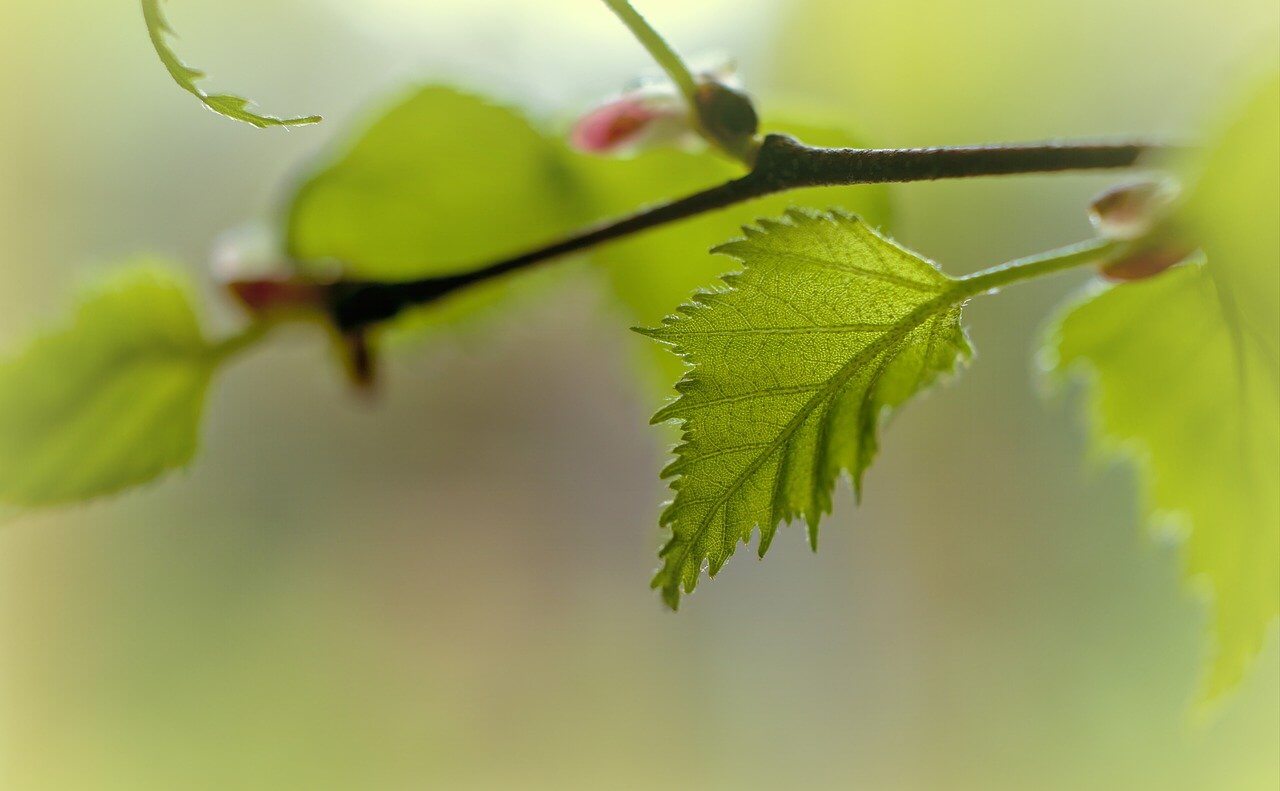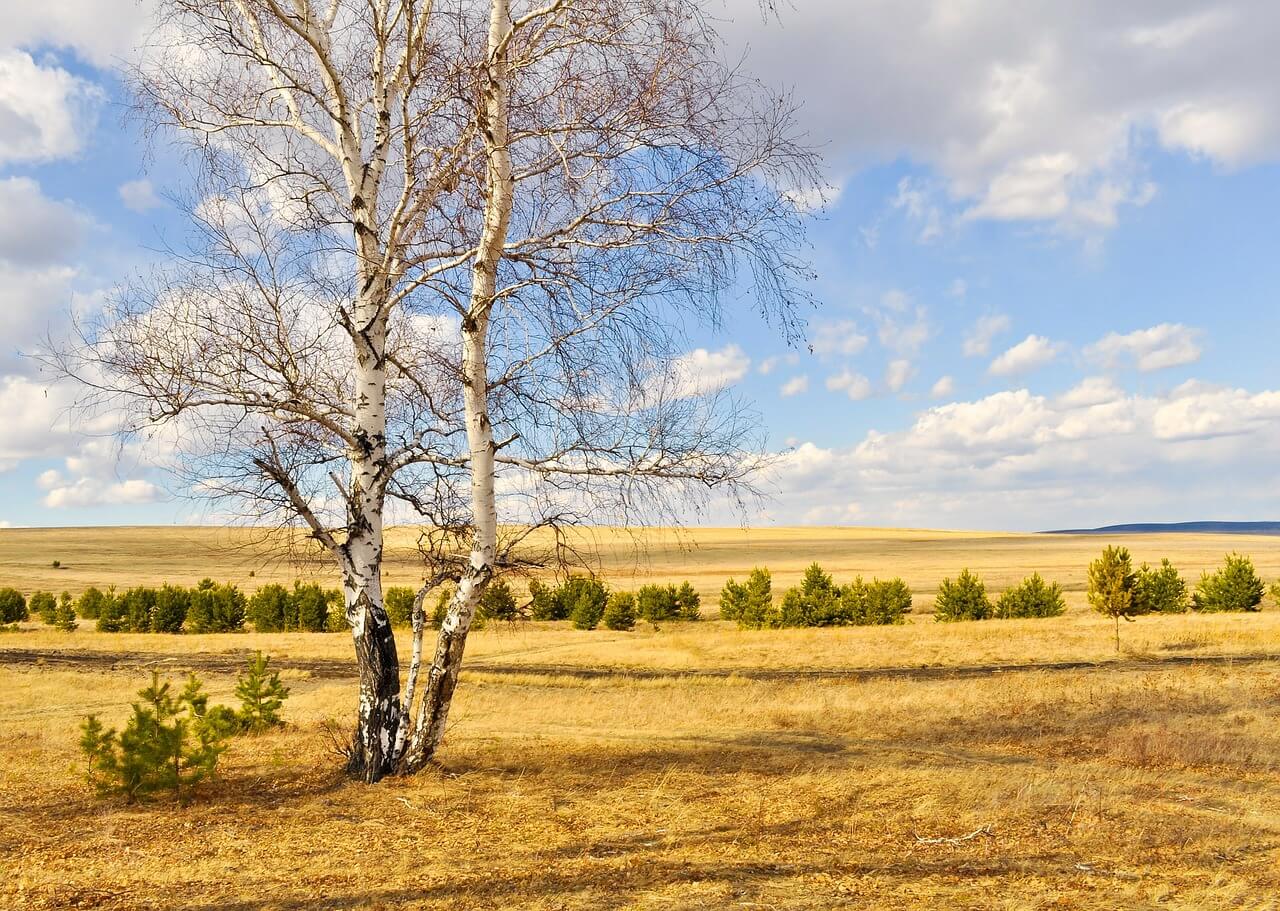Birch trees are beautiful and often used for landscaping. How can you make sure your birch stays looking its best? Read on to learn more about how to trim a birch tree and what time of year is best for pruning.
What You'll Learn Today
Can I Prune a Birch Tree?

Like any other tree, birch trees can be pruned. In fact, sometimes it’s even best for their health to cut away dead, diseased, or improperly growing branches.
That said, you have to be very careful when pruning birch trees. They are very sensitive trees, and trimming away too much or doing it wrong can cause more harm than good.
When pruning birch trees, only trim away dead, diseased, or damaged branches. Make note of the branches that need to go, then trim them away during the late spring through early fall.
Do not perform routine trimming during the tree’s dormant season because this may cause it to leak sap. Even if the tree isn’t actively sapping on the day you trim, sap may begin to flow before the pruning wounds have healed, causing the tree to leak.
If at all possible, avoid pruning a birch tree during the few weeks when sap is flowing.
If the tree sustains a broken branch that is posing some hazard to your home, pets, or family, then it needs to be removed immediately even during sap season. Just keep in mind that you will need to water the tree daily for the next few weeks to make up for sap loss.
Can I Reduce the Height of a Birch Tree?
Many homeowners plant birch trees for aesthetic purposes, not realizing how large the trees can get. If you have a birch tree that’s outgrowing its location, you may be wondering if it’s okay to cut away the top growth, making the tree shorter and perhaps less dense.
This practice is called topping. While it is technically possible to top a birch tree, doing so isn’t the best idea.
Topping a tree both weakens it and stunts its growth. What’s more, cutting away large sections of the tree will produce large, open wounds in the main branches, leaving the tree open to rot and pests.
Aside from being hard on the tree, topping simply looks ugly. It makes the tree look “bald” at first, and the new growth will come in at odd angles
Plus, after a few years, the new branches, growing straight up, will make the tree nearly as tall as it was before topping. Repeated toppings to try to keep a tree at a certain height may kill it over time.
To avoid having to reduce your tree’s height, plan ahead before planting it. Know how large the tree may get and plant it in a spot where it won’t outgrow its bounds.
You might also try planting two or three birch trees together, as they will have to compete for soil resources and may limit each other’s growth naturally.
If an existing tree is too large, it’s better to simply remove the tree than to top it or attempt to reduce its height.
How Do You Shape a Birch Tree?
Most birch tree species tend to shape themselves. They are very shapely trees to begin with, often producing a conical or triangular canopy without any help from a pruning saw.
If you want to give your birch a different shape than the one it develops naturally, it’s best to do so when it’s young, and to remove as few branches as possible.
Before doing any kind of pruning on your birch trees, it’s a good idea to watch a good tutorial video first. The one below is a great place to start:
When pruning and shaping your tree, it’s important to keep the following tips in mind:
- Don’t cut the tips off branches you leave. This practice is called tipping, and it weakens individual branches by stunting their ability to produce new growth. Over time, these branches will weaken and die, as well as harm the overall health of the tree.
- Stick to pruning branches 2 to 3 inches in diameter. Anything larger than this should be handled by a professional arborist.
- Use a pruning saw. This type of saw is made specifically for pruning trees; it is small enough to fit in tight spaces and sharp enough to produce a clean cut.
- Use the 3-cut method to make clean cuts that can heal properly. This method involves creating a small cut on the underside of the branch about 6 to 12 inches out to prevent the branch from tearing; sawing all the way through from the top an inch outside of the first cut; and finally removing the last 6 to 12 inches of the branch.
The 3-cut method is the best way to avoid damaging the tree and produce a clean cut that will heal well. The method is described and demonstrated in the tutorial video above.
- Don’t cut into the branch/bark collar. This is the swollen area where the branch connects to the trunk. Cutting into this joint will make it harder for the tree to heal itself.
- Don’t let the cut tear at the end. A clean cut is easier for the tree to repair than the jagged edges of torn wood. Slow down, don’t rush, and make sure the wood doesn’t tear under your saw.
In What Month Do You Prune Birch Trees?

Most trees are pruned during their dormant season, but that isn’t the case with birch trees. Since birch is a heavy sap producer, pruning during the dormant season can cause them to lose too much sap at once, weakening the tree.
Birch trees should be pruned in the late spring through early fall – after the new growth has been produced, but before the tree enters its dormant stage.
The best month to prune will depend on your specific region, but in general, birch trees should be pruned between May and August.
Conclusion
To trim a birch tree, it’s best to only remove the diseased or dead branches. If you want to shape your tree, make sure you do so while it’s young, and be careful to make clean cuts.
Avoid removing too many branches or branches that are too large, as this will weaken the tree. Finally, save your pruning for the spring and summer months to avoid causing your birch to bleed too much sap.
How often should we trim a birch tree?
Basically, you shouldn’t trim a birch tree! I don’t know why people think you need to trim any tree. They aren’t rose bushes! Most of the beauty of trees comes from their natural form and that is instantly destroyed when you prune any tree. You also risk the health of the tree, as explained in the article. A trimmed tree is a sad thing that cannot be reversed. So if you don’t have a reason to trim your tree (eg. that it is growing very big and your neighbour is complaining about the shade), simply don’t!
It helped that you mentioned it would be advisable to not perform routine trimming on your birch trees during their dormant season, since the sap might leak and flow if you do so. I’ve been into landscaping lately so I wanted to get the birch trees in my backyard some trimming. I’ll have to contact professional tree trimming services so I can inquire more about when it would be best to do it and if they can help with it.
If you are into landscaping then the best thing is to not trim your birch tree. Trees do not need trimming and are not normally trimmed, so what would be your reason ? The natural form of a tree is far more beautiful then the dis-jointed look and disabled look that the tree will have if you start cutting bits of it. (Of course if you contact some professional tree trimming people, they will make it sound desirable.)
My river birch is far too tall for its location. If I cut down all three trunks, will suckers grow at the base to create a clump rather than another tall tree?
Birch trees do not stump sprout after being cut. If you cut all stems (or trunks) of the tree, you will kill the tree and need to plant another river birch or preferably a species that better suits your location.
So I had my 2 birch trees pruned I think they took off way to much especially off of my favorite shorter one at least 50 percent of it will it survive?
We have a beautiful river birch tree in our front yard. A few years ago my husband had one of the stems/ trunks removed to help manage the size if the tree since it was probably planted too close to the house by the previous owner. Last year all the leaves fell well before fall. This year the tree on the right grew sporadic leaves. The one on the left is just branches no leaves.
I’m wondering if we shocked the tree by removing the middle tree and essentially killed it :(! We had many arborists look at the tree and none advised we do harm to the tree.
Thank you for any info you can share!
Best,
Christina Pearson
Our Birch Tree is very old, and now bends almost sideways about 1/3 up from the ground. I thought we could cut a portion off the top, but after reading this I am not sure.
How should we handle this?
Basically, you shouldn’t trim a birch tree! I don’t know why people think you need to trim any tree. They aren’t rose bushes! Most of the beauty of trees comes from their natural form and that is instantly destroyed when you prune any tree. You also risk the health of the tree, as explained in the article. A trimmed tree is a sad thing that cannot be reversed. So if you don’t have a reason to trim your tree (eg. that it is growing very big and your neighbour is complaining about the shade), simply don’t!